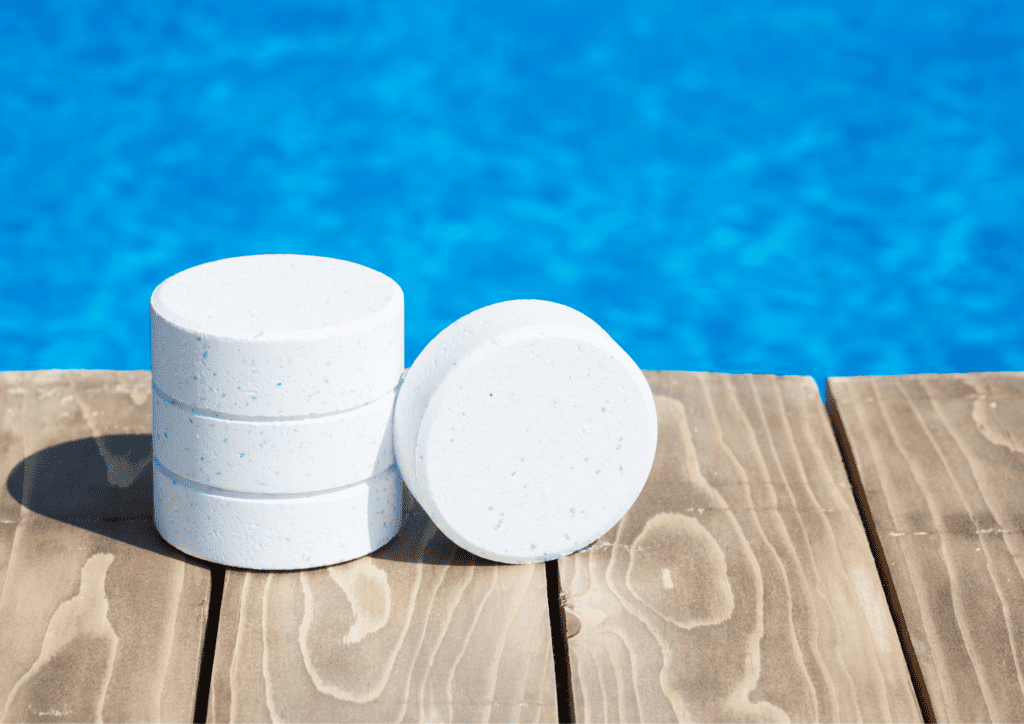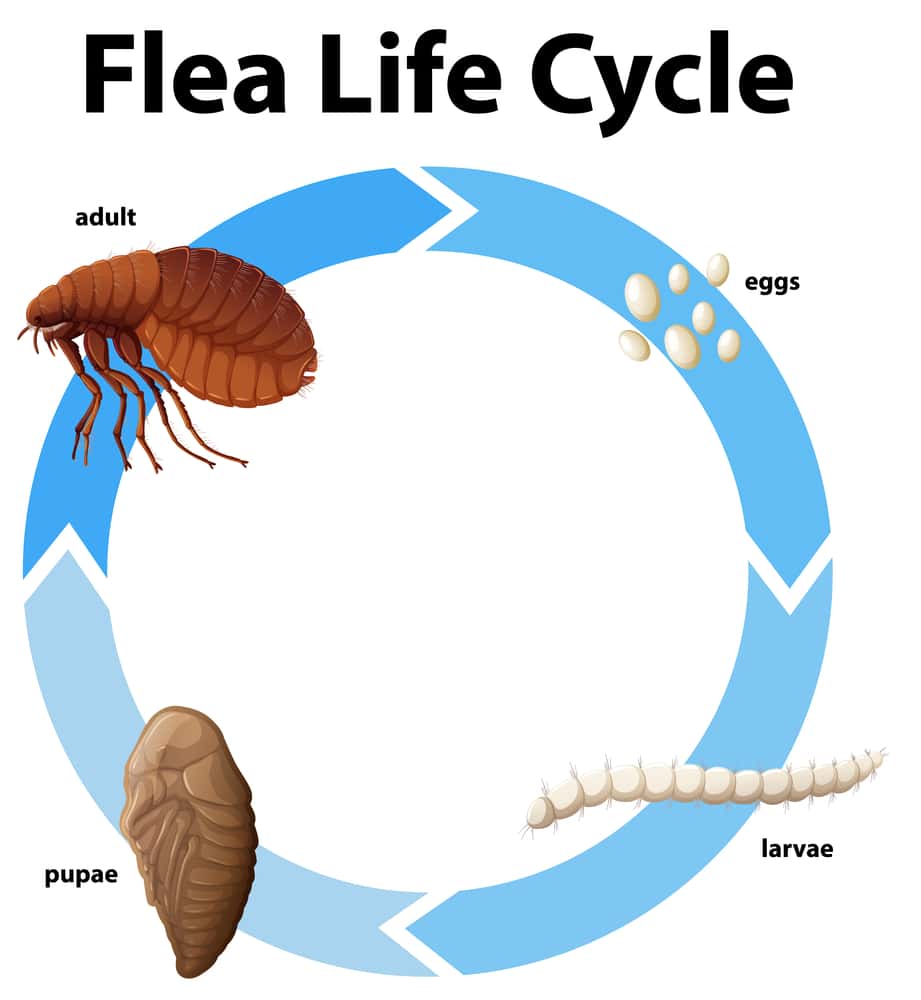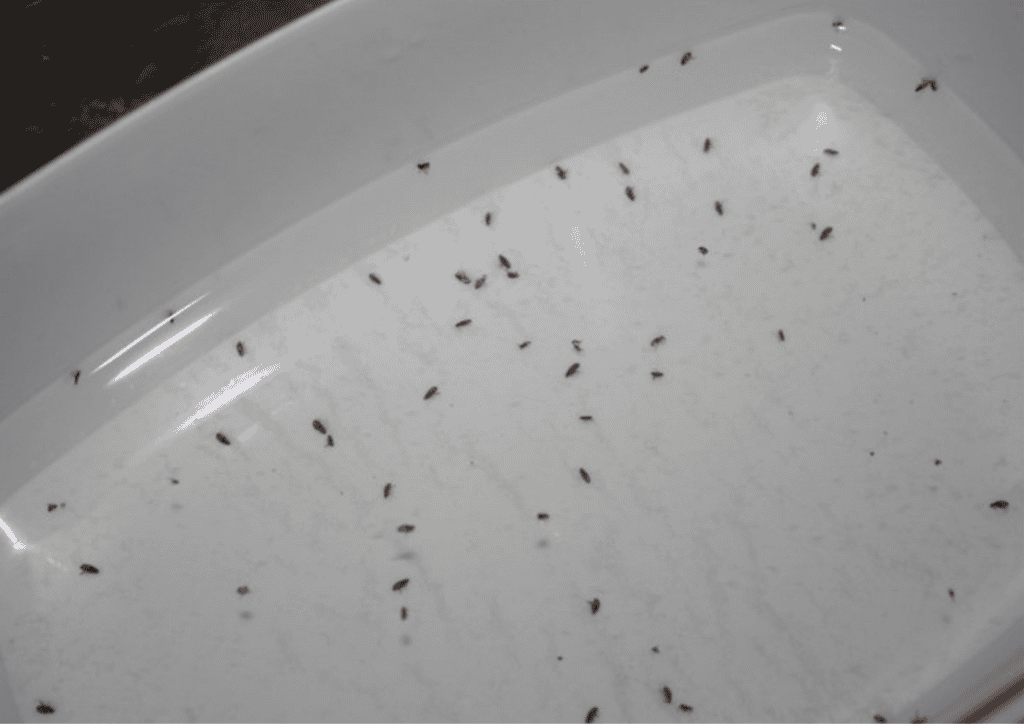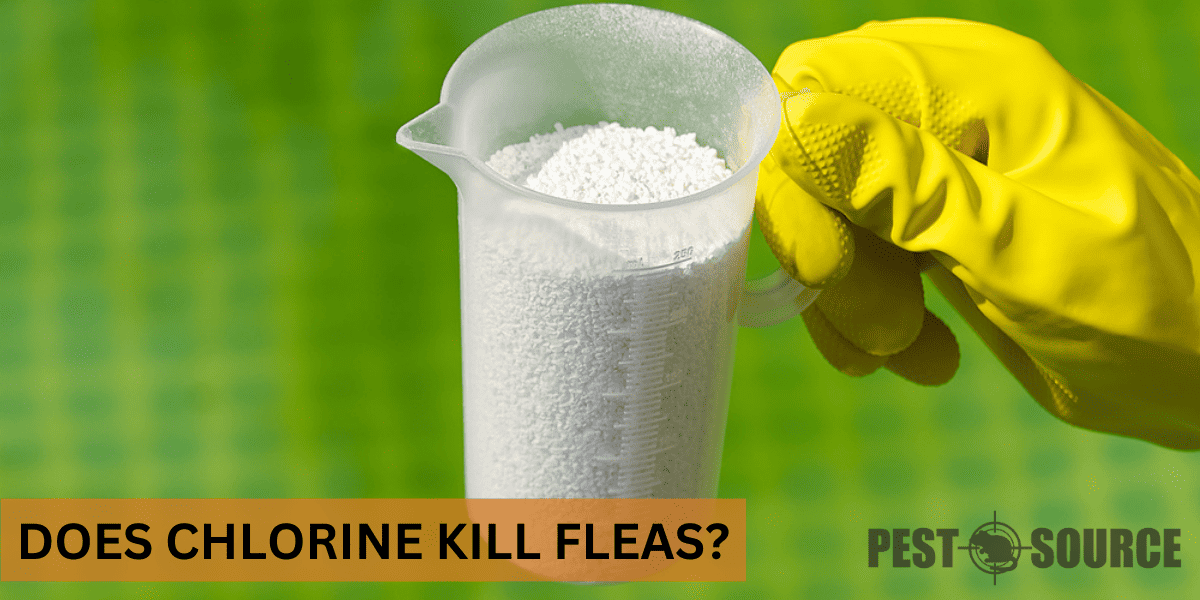When dealing with a stubborn flea infestation, homeowners often look for alternative solutions to eliminate these pesky invaders. Among the numerous options available, chlorine and bleach are known to be effective in killing fleas. But how do these chemicals work against fleas, and can they safely be used for flea control around your home and pets?
In this comprehensive article, we will discuss the lethal effects of chlorine and bleach on fleas, their potential harm to pets, and the efficiency of using a washing machine to eliminate fleas. Furthermore, we will explore the roles of water and bleach-water solutions in flea extermination, providing practical insights into the usage of these methods in different scenarios, along with necessary precautions to ensure a safe and effective flea control strategy.
POINTS
- Chlorine and bleach can effectively kill fleas, larvae, and eggs by breaking down their protein structures, but they can also be toxic to pets and humans if not properly managed or diluted.
- Washing machines, particularly when using hot water (130°F), are highly efficient in eradicating fleas from clothes, pet bedding, and other washable items.
- It’s not recommended to use chlorine or bleach directly on pets, as they can cause skin irritation, chemical burns, or respiratory issues. Opt for pet-safe flea treatments recommended by a veterinarian instead.
- A diluted bleach-water solution can be lethal to fleas, but it’s essential to exercise caution when using it around pets and children, and to follow the manufacturer’s guidelines for concentration and application.
- When using chlorine or bleach for flea control, prioritize pet-friendly treatments, consult professional exterminators or veterinarians, and follow necessary safety precautions to ensure the well-being of your household and pets.
Does Chlorine Have a Lethal Effect on Fleas?
Can chlorine be used effectively to eliminate fleas?

Chlorine can effectively eliminate fleas, as it acts as a powerful disinfectant that destroys the cell structures of the fleas. It works by breaking down the protein molecules in fleas, causing their extermination. However, in order to be effective, a high concentration of chlorine is usually required. This may create issues when using chlorine for flea control, as it can be toxic to pets and humans if not properly applied or managed.
Can chlorine kill ticks, similar to its impact on fleas?

Chlorine is also capable of killing ticks in a similar manner to fleas. It breaks down their protein structures, effectively killing them. However, the same precautions need to be followed as with fleas to ensure the safety of pets and humans when using chlorine.
Is the chlorine content in a pool sufficient to kill fleas?

The chlorine content in swimming pools can be sufficient to kill fleas. However, this would depend on the pool’s chlorine concentration and how long the fleas are exposed to the chlorine. Even though the fleas may die, it’s not recommended to rely on a pool’s chlorine level as the primary defense against fleas.
What is the potential harm of chlorine to pets?

Understanding the potential harm of chlorine to pets is crucial for safely managing flea infestations. Below is a detailed table highlighting the types of harm chlorine can cause to pets, symptoms to watch for, and precautionary measures to ensure their safety.
| Type of Harm | Symptoms | Precautionary Measures |
|---|---|---|
| Skin Irritation/Allergy | Redness, itching, discomfort | Rinse affected areas with water immediately; consult a vet |
| Respiratory Issues | Coughing, wheezing | Ensure well-ventilated areas when using chlorine; avoid inhalation |
| Chemical Burns | Skin lesions, pain | Use diluted solutions; wear gloves and ensure pet safety |
| Eye Irritation | Redness, watering | Avoid contact with eyes; rinse with water if exposed |
Make sure to follow all instructions when using chlorine-based products and ensure your pet’s safety during the process.
How might chlorine in its diluted form be used to kill fleas?
Chlorine in its diluted form (not exceeding a concentration of 1% to 2% when mixed with water) can be used as an effective flea treatment. For example, diluted chlorine can be applied to:
- Pet Bedding: To eliminate fleas, larvae, and eggs from areas where pets sleep and spend a lot of time.
- Floors: For treating all types of flooring, including tile, hardwood, and linoleum, especially in high-traffic pet areas.
- Outdoor Kennels: To disinfect and kill fleas where pets spend a lot of outdoor time.
- Pet Crates: For thorough cleaning and flea control, especially if pets have had fleas while using them.
- Garbage Bins: Near pet areas to kill fleas and prevent them from spreading.
- Driveways and Patios: Where pets frequently roam and might pick up or drop off fleas.
- Entryways: To minimize the chance of fleas entering the home on shoes or pets.
- Basement and Garage Floors: Especially if these areas are prone to dampness or have been infested before.
- Bathroom Floors: Where high humidity might allow fleas to survive longer.
- Under Decks: A common hiding spot for fleas and other pests, where pets might rest or play.
However, it’s essential to follow safety precautions and ensure that pets are not exposed to the treated areas until the solution has fully dried, and no residue is present.
What is the Impact of Bleach on Fleas?
Bleach is recognized for its potent impact on eliminating fleas due to its active ingredient, sodium hypochlorite, which destroys the cell structures of these pests. Below is a table that outlines how bleach affects fleas, including its effectiveness on different life stages and the critical considerations for safe use.
| Target | Effectiveness | Notes |
|---|---|---|
| Adult Fleas | High – Kills on contact | Direct contact needed; area must be cleaned of organic matter first |
| Flea Eggs | High – Destroys outer layers | Prevents hatching by breaking down protective layers |
| Flea Larvae | High – Inhibits development | Disrupts growth and survival chances |
| Safety for Pets | Not Advised | Highly toxic; can cause skin irritation, chemical burns, respiratory issues |
| Application Method | Direct to Infested Areas | Do not use on pets; dilute as per guidelines for use on surfaces |
Does bleach kill fleas and, if so, under what conditions?

Bleach an effectively kill fleas, as it contains sodium hypochlorite, which destroys the cell structures of these pests. To be effective in killing fleas, bleach needs to come in direct contact with them, and the area should be thoroughly cleaned to remove any remaining organic matter. However, bleach is a harsh and toxic chemical, so use it with caution to ensure the safety of your pets and family members.
How does bleach affect flea eggs and larvae?

Bleach is not only effective in killing adult fleas but also flea eggs and larvae. It breaks down their protective outer layers, making it difficult for them to survive and reproduce. Keep in mind that, while bleach can be effective, it must be used responsibly and according to the manufacturer’s instructions.
Can bleach exterminate fleas on a dog safely?

Using bleach directly on your pet is not advised, as it is highly toxic and can cause skin irritation, chemical burns, or even respiratory issues. Instead, use pet-safe flea treatment products recommended by your veterinarian to safely and effectively eliminate fleas from your dog.
How long does it take for bleach to kill fleas?
The time it takes for bleach to kill fleas depends on factors like the concentration of bleach used and its exposure time. Generally, bleach can kill fleas on contact or within a few minutes if they are submerged in a bleach solution. However, it’s essential to use bleach responsibly and always dilute it according to manufacturer’s guidelines.
How Efficient is a Washing Machine in Eradicating Fleas?
Do fleas die in a washing machine?

Washing machines can be highly efficient in eradicating fleas from your clothes, pet bedding, and other washable items. The combination of hot water, detergent, and agitation during the wash cycle effectively kills adult fleas, larvae, and eggs.
How does cold water affect fleas during a wash cycle?
Cold water is less effective in killing fleas than hot water. Although fleas can be sensitive to changes in temperature, a cold water wash may not be enough to kill them. Instead, use hot water (approximately 130°F) to ensure the effective elimination of fleas during the laundry process.
At what temperature do fleas die in a washing machine?
Fleas die in a washing machine when exposed to water temperatures of around 130°F (54°C) or higher. Washing your clothes, pet bedding, and other washable items at this temperature effectively kills adult fleas, larvae, and eggs. Additionally, running the washed items through a high-heat dryer cycle ensures that any remaining fleas are eliminated.
Understanding the Role of Water in Killing Fleas
Is it possible to drown fleas in water?

Yes, it is possible to drown fleas in water. Although fleas are relatively small, they still require oxygen to survive. Submerging fleas in water cuts off their oxygen supply, effectively drowning them. However, drowning fleas in water is not necessarily the most efficient or practical method of pest control, as it may not address the entire flea life cycle.
How long does it take to drown fleas in water?
It may take several minutes to several hours to drown fleas in water. This duration depends on factors such as the fleas’ size, the water temperature, and if you’ve used plain water or soapy water.

| Condition | Time to Drown in Plain Water | Time to Drown in Soapy Water |
|---|---|---|
| General | Up to 24 hours | A few minutes to an hour |
| Temperature Variations | Depends on water temperature; colder water may slow the process | Less affected by temperature due to the soap’s effect on flea buoyancy |
| Flea Size | Larger fleas may take longer | Size less significant due to soap disrupting surface tension |
However, bear in mind that drowning fleas in water may not be the most effective pest control method, as it may not eliminate eggs, larvae, and pupae hidden in the environment.
Does cold water have the capacity to kill fleas?
Cold water may kill some fleas but is generally less effective than hot water in killing them. Hot water (around 130°F) is recommended for dealing with flea infestations on washable items, as it effectively kills adult fleas, larvae, and eggs, while cold water may not provide the same desired outcome.
The Use of Bleach and Water as a Flea-Killing Solution
Does a mixture of bleach and water have a lethal effect on fleas?

A properly diluted mixture of bleach and water can have a lethal effect on fleas. The bleach’s active ingredient, sodium hypochlorite, is effective in killing not only adult fleas but also their eggs and larvae. However, this solution should be used with caution, particularly around pets and children, due to bleach’s highly toxic nature.
Can this bleach-water solution kill fleas on contact?
A bleach-water solution, when properly diluted, can kill fleas on contact. The sodium hypochlorite effectively breaks down their cell structures, exterminating the pests. It’s important to remember, though, that bleach is toxic for both pets and humans. Therefore, use this method with care, and always follow the manufacturer’s guidelines in terms of concentration and application.
How long does it take for a bleach-water solution to kill fleas?
The time it takes for a bleach-water solution to kill fleas depends on factors such as the bleach concentration, the amount of organic matter in the area, and the solution’s duration of contact with the fleas. Generally, bleach can kill fleas on contact or within a few minutes when properly concentrated and applied.
Insights into Practical Use of Chlorine and Bleach for Flea Control

Should bleach be used for fleas in various scenarios?
Bleach can be used in certain scenarios to control flea populations, especially on non-porous surfaces or in areas where other treatment methods may not be feasible. However, it should be used with caution, considering its toxic nature. Always prioritize safer, pet-friendly alternatives and consult with a professional exterminator or veterinarian for tailored advice on tackling flea infestations.
Can fleas be drowned in a washing machine using chlorine or bleach?
It’s not recommended to use chlorine or bleach in a washing machine to drown fleas. Instead, opt for a high-temperature wash (around 130°F) and laundry detergent to eliminate fleas from your clothes, pet bedding, and other washable items. Running the items through a high-heat dryer cycle further ensures the extermination of any remaining fleas.
What precautions should be taken when using chlorine or bleach to eliminate fleas?
When using chlorine or bleach to eliminate fleas, follow these precautions:
- Dilute the bleach or chlorine according to the manufacturer’s guidelines.
- Avoid using bleach directly on pets or areas where they may come into contact with it.
- Provide adequate ventilation when applying chlorine or bleach to minimize fume inhalation.
- Wear protective gloves and clothing to avoid skin irritation and chemical burns.
- Keep pets and children away from treated areas until the solution has dried completely and there is no residue.
- Consider alternative, pet-friendly treatments when possible, and consult a professional for guidance.
Conclusion: Is chlorine or bleach an effective method for flea control?
Chlorine and bleach are indeed effective methods for flea control. However, their use should be limited due to their toxic nature. Always prioritize pet-friendly treatments and professional advice when dealing with flea infestations. If you decide to use chlorine or bleach as part of your flea control strategy, exercise caution and follow all safety guidelines to ensure the well-being of your family and pets.



